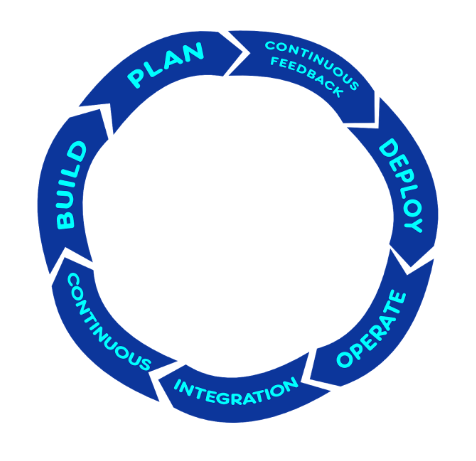So, you’ve decided to hire a developer to build custom software for your company.
That’s great!
(And we don’t just say that because we’re software developers.)
(Well, maybe a little.)
Whether you’ve already hired a software development company or you’re still looking, it’s important that you’re prepared for the custom software development process. In fact, if you haven’t found a software development company yet, preparing your expectations in advance could actually lead you to the company that’s the best fit for your needs.
And yes, we here at Steele Consulting would love to be that fit for you, but even if we’re not, this blog post will give you valuable insight into what you can expect in your upcoming custom software development process.
What to expect when you’re expecting… custom software.
Building a custom software product from scratch is an expensive investment, so having accurate expectations will help you maximize your ROI. Speaking of cost, let’s kick things off with cost expectations for the custom software development process.
Custom Software Cost
Yes, custom software products are very expensive, but there are many ways you can mitigate the cost without compromising the quality of your project. Since the custom software product you are building is being created to meet your needs better than anything else on the market, it’s more than fair that you get the full benefits of your investment.
If you’re looking to set some expectations for the average cost of the custom software product you have in mind, here’s a helpful resource we recommend. We love how up-front this company is with their pricing, and though it may be daunting at first, we highly recommend looking at this chart to gain a baseline estimate of the cost of your custom software product.
Technical Requirements
After you and your software development company have covered pricing, the first thing to keep in mind for the custom software development process is the technical requirements. Depending on the scope of your project, your software developer will need access to a wide variety of items to start your project off right.
![]() Here at Steele Consulting, we always begin the custom software development process with an on-site analysis. Why do we need an on-site analysis for software, you ask? Well, we believe that immersing our team in your physical world is essential to effectively building your digital one.
Here at Steele Consulting, we always begin the custom software development process with an on-site analysis. Why do we need an on-site analysis for software, you ask? Well, we believe that immersing our team in your physical world is essential to effectively building your digital one.
Next, your software development team will also need login information (or the ability to create login information) for the accounts and websites needed to complete your project. After all these technical requirements are shared, the custom software development process will move to the architecture phase, where your software development team will begin mapping out the plans for the structure of your project.
Design & Development
This right here is the meat of your project. When your project is in the design and development phase, it’s important to be clear on how your software developer chooses to conduct the custom software development process.
For example, at Steele Consulting, we’ve adopted the agile approach to software development. Here’s a nifty graph that outlines this process:
 The agile approach is an interval-driven process that promotes collaboration and consistent client feedback throughout the custom software development process. So, instead of hiring a company to map out a project and give it to you in 10 months, the agile process has your software developer send you a small, completed aspect of a project every two weeks or so for your feedback and approval.
The agile approach is an interval-driven process that promotes collaboration and consistent client feedback throughout the custom software development process. So, instead of hiring a company to map out a project and give it to you in 10 months, the agile process has your software developer send you a small, completed aspect of a project every two weeks or so for your feedback and approval.
It may sound tiring, but in the long run, the agile approach saves clients thousands of dollars in avoidable rework costs. It shows you the consistent progress of your project and sets up an effective feedback cycle between you and your developer, so you know that your vision for your custom software is being built into the final product.
Using the agile approach, potential problems are discovered and dealt with immediately, rather than at the end of the road when you’re ready to receive your completed software product. Here at Steele, the agile approach also gives us the opportunity to routinely assess the essential questions What went well? What didn’t go well? and What could be better? throughout the custom software development process.
Whatever process your software developer employs, be sure that it will prioritize consistent communication and feedback so that your project doesn’t jump up in price due to rework and overtime expenses.
Tips for the building the best developer relationship
In addition to the expectations we’ve laid out for you above, here are a few tips we recommend so that you, as a client, can have the best possible experience working with a custom software development company.
- Find someone in your company that can dedicate 10 hours a week to the custom software development process. Yes, you did read that correctly! Pick a team member — ideally someone in a leadership role or even a dedicated product owner — who can allocate10 hours a week for meetings, testing, and feedback to ensure your company is getting what you’re paying for. And yes, we truly recognize that this seems like a lot to ask, but the reality is, the best custom software projects result from a strong client/developer relationship.
- Let your developer be your problem solver. Many clients come with strong ideas on what the solution to their problems are for custom software products, but software developers often have faster, better, and more economical solutions to the problems your software needs to resolve. We highly recommend coming to your software development company with a list of problems that your custom software needs to resolve and letting the developers create the best solutions.
We’ve seen firsthand how both of these tips lead to incredible client/developer collaborations that create breathtaking experiences for you and your customers.
If you need more feedback on what to expect for your custom software product, or if you’re interested in our software development services, connect with us today. We’re here to help!
